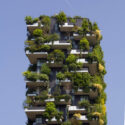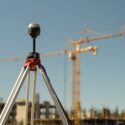Softscapes 101
An essential of any landscape architectural design is balance, and two key contributors to this equilibrium are softscapes and hardscapes. When juxtaposed correctly with hardscaping, softscaping elements can create an aesthetic to a design that feels natural to the senses and showcases the unique character of a place.
What are Softscapes?
Softscapes can be defined as all of the features in a design that are not permanent or structural, but rather always moving and fluid. The living part of any landscape is called the softscape, which may include shrubs, trees, flowerbeds, soil, vegetable gardens, flowers, grass, etc. These elements are going to evolve over time, giving the landscape an element of ever-changing beauty. The fluidity of a landscapes allows for ease of transformation and modification, according to a desired style and character. This aspect of extreme flexibility allows for a variety of diverse environments.
The Uses
There are many ways to use softscapes in a design, but often times they are used to enhance aesthetics or soften the surrounding hardscape. The natural elements and the ever-changing nature of softscape components make them ideal for giving a layer of depth to any landscape design.
Softening Hardscapes:
When a design is heavily focused on hardscape elements, it can provide a sense of harshness. Adding softscape elements to areas with hardscape can balance the design out, while enhancing the natural senses and bringing softness to the surrounding environment.
Aesthetic Appeal:
On their own, softscapes can be used to add beauty and character to a landscape. Most softscape elements are not structurally essential; their main purpose in a design is to bring out the beauty and personality of a location.
Environmental Benefits
Apart from adding to the aesthetics of a design, softscapes are also a great addition to the environment and an easy way of incorporating sustainability into a property. Here are some of the ways in which they benefit the environment:
Sustainability:
If used properly, softscapes can help address some critical problems such as wildlife integration, soil management, pest control, and reducing urban heat islands. When a professional is designing with softscapes, they understand the importance of ecology and placement of those elements in order to maximize the sustainability of the site they are working with.
Soil Benefits:
Improvement of soil quality is another advantage that comes with incorporating softscapes into a design. Again, when used correctly, they can prevent the growth of weeds, allow for improvement of the soil structure, and its ability to reduce water runoff.
Softscapes at Baseline
Incorporating softscapes into projects of all sizes is not only beneficial to the environment, but also advantageous to owners. When someone invests in landscape elements, such as softscape, they are investing in a company. Softscapes can reduce unwanted noise, offset the cost of heating and cooling, and can increase the overall value of a property. Softscapes can be designed at any scale and can be incorporated into any type of development, existing or proposed.
At Baseline, we have professional landscape designers and landscape architects that understand the value of incorporating landscape elements into the design process. We use softscapes in a variety of projects that include the design of roundabouts, streetscapes, and a multitude of commercial designs. If you are looking to incorporate a unique character into your property, showcase your business, enhance architectural features, or want an opportunity to invest into the environment, we are here to help. For more information, please contact on our Planning Department Director, Ben Thurston, AICP, for your future planning needs by phone at 303.202.5010 or email at ben.thurston@baselinecorp.com.



